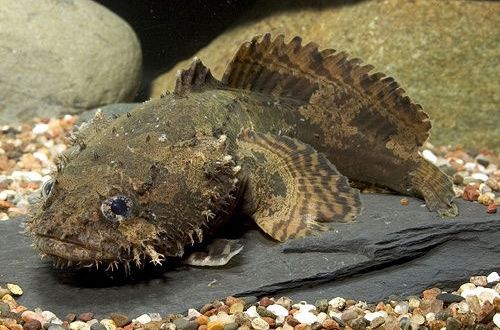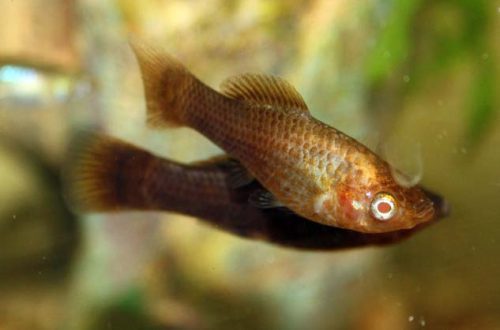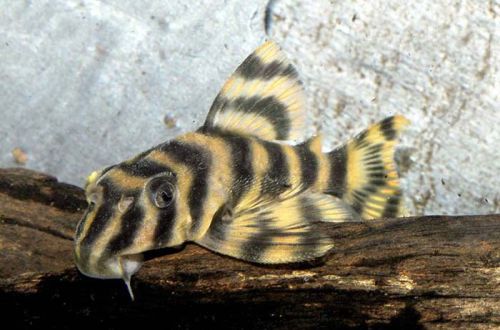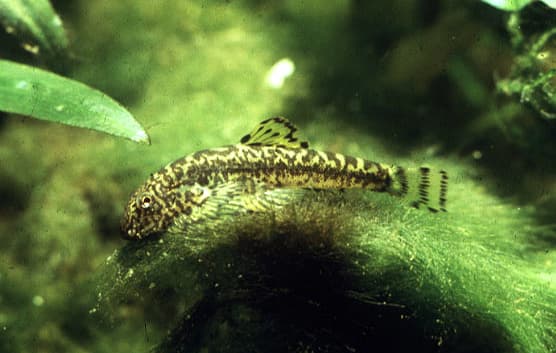
Chinese pseudogastromizon
Pseudogastromyzon cheni or Chinese Pseudogastromyzon cheni, scientific name Pseudogastromyzon cheni, belongs to the family Gastromyzontidae (Gastromizons). In the wild, the fish is found in the river systems of most of the mountainous regions of China.

This species is often referred to as an aquarium fish for aquariums imitating mountain rivers, but another related species, Pseudogastromyzon myersi, is most often supplied instead.
Apejuwe
Adults reach a length of 5–6 cm. The fish has a flattened body and large fins. However, the fins are not designed for swimming, but to increase the area of the body so that the fish can more effectively resist strong water flows, snuggling tightly against stones and boulders.
Depending on the geographical form, the color and pattern of the body are varied. Most often there are samples with brown color and yellow streaks of irregular shape. A characteristic feature is the presence of a red border on the dorsal fin.
Henie’s pseudogastromison and Myers’ pseudogastromison are practically indistinguishable, which is the reason for the confusion in the names.
Awọn amoye ṣe iyatọ awọn eya wọnyi lati ara wọn nikan nipa wiwọn awọn ẹya ara ẹrọ ti ara. Iwọn akọkọ jẹ aaye laarin ibẹrẹ ti fin pectoral ati ibẹrẹ ti fin ibadi (awọn aaye B ati C). A gbọdọ ṣe wiwọn keji lati pinnu aaye laarin ibẹrẹ ti fin ibadi ati anus (awọn aaye B ati A). Ti awọn wiwọn mejeeji ba dọgba, lẹhinna a ni P. myersi. Ti ijinna 1 ba tobi ju ijinna 2 lọ, lẹhinna ẹja ti o wa ni ibeere jẹ P. Cheni.
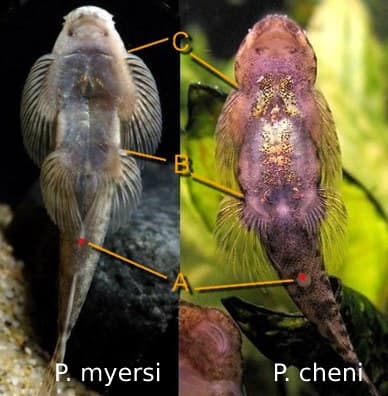
It is worth noting that for an ordinary aquarist, such differences do not matter much. Regardless of which of the two fish is purchased for the aquarium, they require identical conditions.
Alaye ni kukuru:
- Iwọn ti aquarium - lati 100 liters.
- Iwọn otutu - 19-24 ° C
- Iye pH - 7.0-8.0
- Lile omi - alabọde tabi giga
- Iru sobusitireti - awọn okuta kekere, awọn okuta
- Imọlẹ - imọlẹ
- Omi olomi - rara
- Gbigbe omi - dede tabi lagbara
- Iwọn ti ẹja naa jẹ 5-6 cm.
- Ounjẹ – ifunni rì orisun ọgbin
- Temperament - ni majemu ni alaafia
- Akoonu ninu ẹgbẹ kan
Iwa ati ibamu
Relatively peaceful species, although in the limited space of the aquarium, aggression between relatives for areas at the bottom of the tank is possible. In cramped conditions, competition will also be observed between related species.
Despite the competition for the best area of the aquarium, the fish prefer to be in a group of relatives.
Compatible with other non-aggressive species capable of living in similar turbulent conditions and relatively cool water.
Ntọju ni ohun Akueriomu
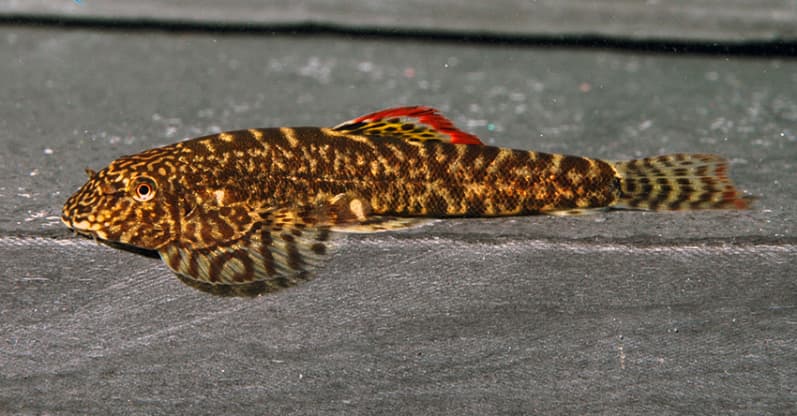
The optimal size of the aquarium for a group of 6-8 fish starts from 100 liters. Bottom area matters more than tank depth. In the design I use rocky soil, large boulders, natural driftwood. Plants are not required, but if desired, some types of aquatic ferns and mosses can be placed, which for the most part successfully adapt to growth in moderate current conditions.
For long-term keeping, it is important to provide clean, oxygen-rich water, as well as moderate to strong currents. A productive filtration system can cope with these tasks.
The Chinese pseudogastromizon prefers relatively cool water with a temperature of 20–23°C. For this reason, there is no need for a heater.
Food
In nature, the fish feeds on algae deposits on stones and microorganisms living in them. In the home aquarium, it is recommended to serve sinking food based on plant components, as well as foods rich in protein, such as fresh or frozen bloodworms, brine shrimp.
Orisun: FishBase



